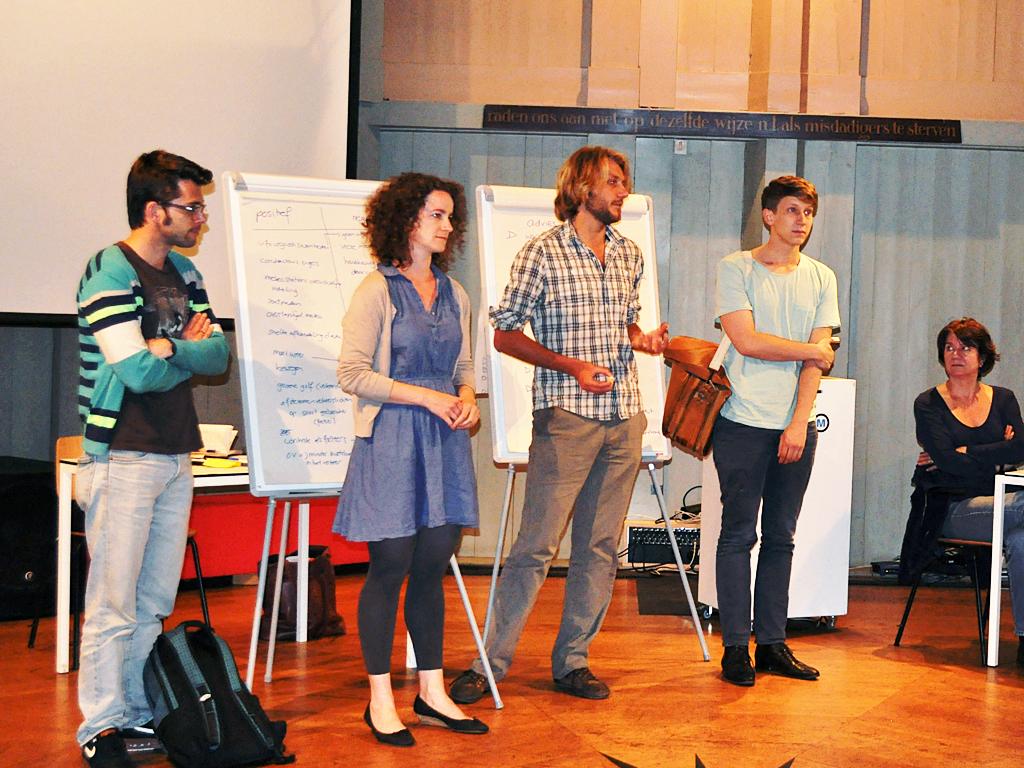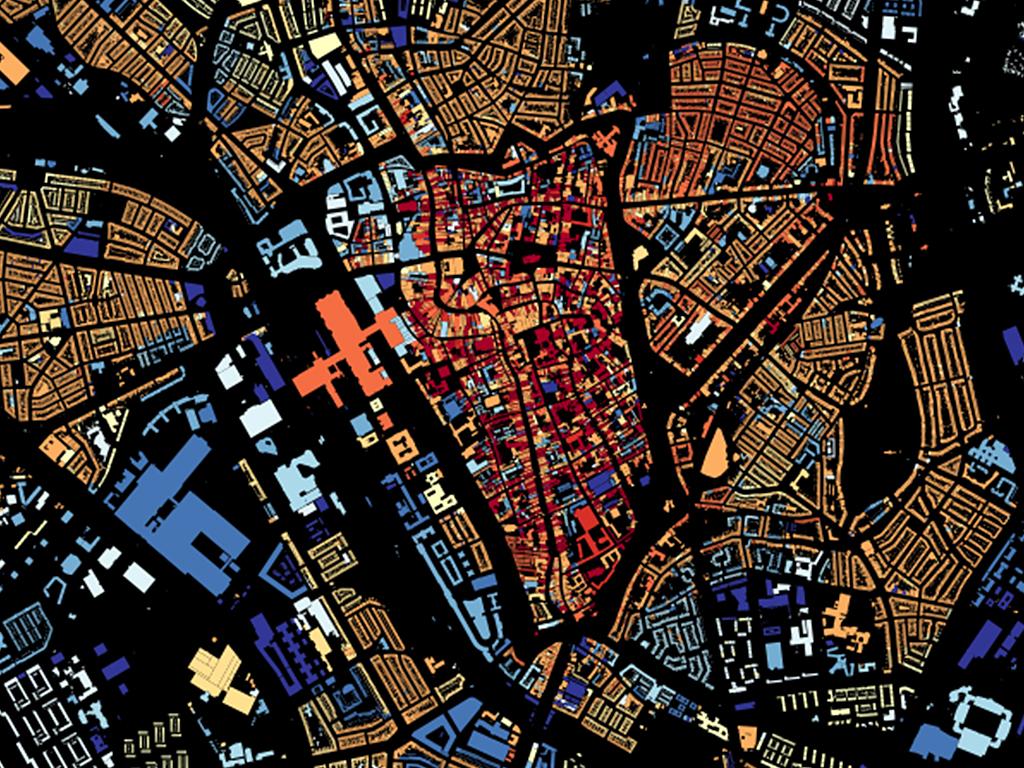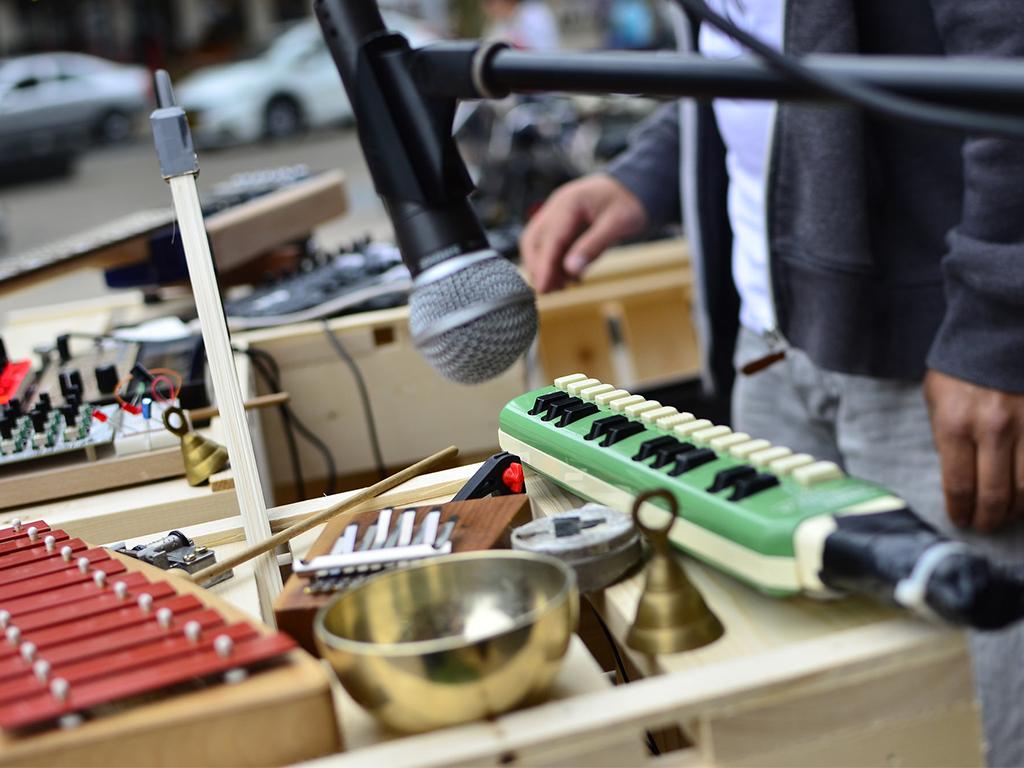On July 30th, 2012 we organised a workshop to gather new insights in people’s mobility needs. A group of inhabitants of Amsterdam was invited to share their experiences and inspire us. We used their input to define the requirements for meeting the user’s needs within the mobility domain. The workshop was intended to extract the universal user’s needs and not to provide the complete picture of users’ experiences.
This workshop was part of the CitySDK project, in which we develop a European Service Developer Toolkit (SDK). The SDK will enable app-developers to build new apps in an easier way; by implementing functionalities and making it easier to offer apps internationally. The workshop will help us define the required services/ functionalities to build applications that meet the user’s needs.
The workshop consisted of three parts. In the first part the participants analysed the context; based on these insights new ideas were generated in the second part of the workshop. Finally we asked the participants to provide feedback on a vision movie we developed. The results below give a brief description of what the participants came up with during their analysis and idea generation.
‘Mobility in Amsterdam’ from the citizens’ perspective
During the workshop, we asked participants to describe the positive and negative aspects that influenced their travel experience during their diary-assignment and before. Based on these insights they gave suggestions for improving their current travel experience. Some examples of the participants’ suggestions:
Ex 1. Journey planning applications should meet the user’s expectations
Users think applications (web- or smartphone based) should: remember points of departure, provide alternative travel routes, have an option for non-smart phone users, inform about construction/detours and they should be fast.
Ex 2. Travellers want relevant and clear information available locally
Information about the journey should always be available and clearly visible at every bus stop. Sometimes the information is displayed at unexpected places and therefore easily missed. Additionally, the information should always be accessible for people without a smartphone.
Ex 3. Cyclists should have as much control as possible
Information about roadblocks, roadwork, weather and road conditions help cyclists to make well-considered choices.
Ex 4. As a citizen you should be able to provide feedback
As a traveller you want to have control over your situation; you’d like to report about things you run into during your journey. The ‘Fix my street’ app is a nice example, which gives you more control over your own situation. Travellers would also like to provide feedback about unfriendly bus drivers or dirty buses/stations.
Workshop’s idea generation
Each group of participants was assigned one of our designers; we asked them to develop an idea that would build further on their findings.
The designers introducing themselves and their expertise.
The following ideas have been developed during the workshop.
Idea 1: App for ‘weather clothes- advice’
This app was developed to support cyclists, to get them to their destination dry and warm and on time. Fifteen minutes after waking up, the app will give a weather-alarm. This alarm is a so-called push message; it shows a picture of recommended (and suitable) clothing for that day. The advice will be communicated in terms of generally known phenomena, like ‘skirts-day’, “soup-day” and “raining cats and dogs-day”. The app’s timeline can be consulted for further details; it shows the weather conditions during the day. When scrolling along the timeline, you will see when it is dry and when you need to adapt your planning (by leaving earlier or later).
Idea 2: Art at the railway
Art at the railway’ is the concept of the ideal bus/tram stop. The shelter has been equipped with solar panels to provide the extra facilities with the necessary energy. The shelter will be equipped with all kind of facilities to start and make the traveller’s journey as comfortable as possible; anything you could need to fulfil your needs is available:
- A Starbucks machine for a coffee to go.
- A ticket machine to buy a single ticket, to reload or check your balance. As a side effect this will also solve the queues in bus/tram
- A smart TV that broadcasts local news, road works and weather forecast.
- Different kinds of art displayed at the bus/tram stops to provide the traveller with some nice, inspiring views during their journey. An accompanying app will provide the arts’ background information and gives the opportunity to buy the museum ticket at before hand to avoid long queues.
- A rating-app to give the traveller the opportunity to have influence on the quality of the trip; feedback can be given about dirty chairs, unfriendly bus drivers, damaged or defect machines.
Idea 3: Full travel experience
This concept addresses the need to get full assistance during the route in order to achieve an optimal travel experience. The system’s recommendations will be based on your own profile. For example, it takes into account your style of transportation (walking, cycling, taxi, electric mobility scooter) to stations and bus stops. The system will know where you are and can therefore adapt your journey in case it starts raining, you miss your connection or you change your plans. To meet all your needs, the app will give additional information about dining options at your destination, travel alternatives and touristic information. This information can also be printed and work as a small, but personalized, travel guide.
Idea 4: Where not to go to-app
This idea was developed to enable people to avoid the crowded places of Amsterdam. The centre of Amsterdam is one of the busiest places in the Netherlands. Imagine a place where tourists are queuing for a museum, schools and churches are going out, cyclists are in a hurry for the next meeting and cars circling for a parking spot. All together, a lot to endure for Amsterdam’s citizens during the day, which, not surprisingly, creates a lot of frustration.
We analysed the results of the workshop to identify the user’s needs and to develop SDK requirements; these will be used to create the technical framework of the SDK. Coming fall we will start with the concept development, the first step to building the services and the mobility application(s), based on the technical framework of the SDK.


